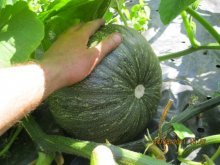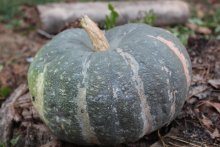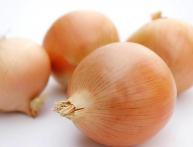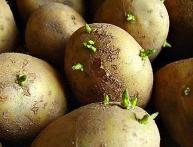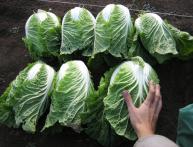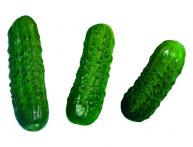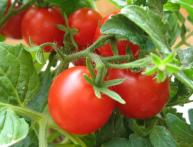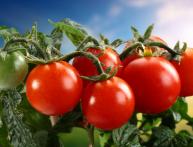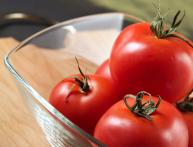Marble pumpkin: characteristics of the variety, necessary conditions for growing
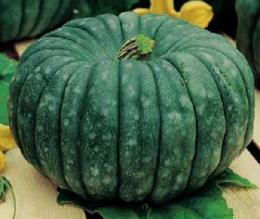
Among the late-ripening large-fruited pumpkin varieties, Marble pumpkin is popular. This is a sweet variety that contains about 10-12% sugar, carotene, pectin, fiber and other beneficial substances. How to grow this variety on your site?
Content:
- Marble pumpkin: variety description
- Growing conditions
- Planting seeds
- Proper pumpkin care
- Uses of pumpkin
Marble pumpkin: variety description
The Marble pumpkin variety is a mid-late variety. About 125-135 days should pass from the first shoots to the first harvest. It is recommended to grow in the southern region. Ripens at the end of summer or with the onset of autumn. The fruits are large, flattened in shape, wrinkled on the surface with light gray inclusions.
The color of the pumpkin is dark gray or gray, sometimes with a greenish tint. The weight of the fetus ranges from 6 to 10 kg. When ripe, the pumpkin pulp is orange, dense and tender. Pumpkin seeds are white with a creamy tint, about 1-3 cm long. This variety has excellent taste and good shelf life, so it can be stored for a long time. The fruits do not crack and are not affected by white rot.
Growing conditions
Pumpkin refers to heat-loving plants. It is advisable to place it on the south side of the site. Pumpkin grows well in areas where beets, carrots, cabbage, onions, and beans previously grew.It will grow poorly in place of potatoes, cucumbers, zucchini, and sunflowers.
For good growth and ripening of fruits, the soil must be fertile. The area for planting pumpkins should be prepared in the fall. It should be dug up and compost or manure added to the infertile soil at the rate of 3-4 kg per square meter. If the soil is heavy and acidic, then add wood ash or lime. Phosphorus-potassium fertilizer can be applied in the fall or immediately before planting seeds.
It is recommended to plant in the ground when the ground warms up well and exceeds 10 degrees. If you plant seeds below the specified temperature, they will not develop and will rot in the soil. The optimal time for planting seeds is the end of May or the beginning of June. It is not recommended to plant next to upright plants, as this vegetable crop has the ability to trail.
Planting seeds
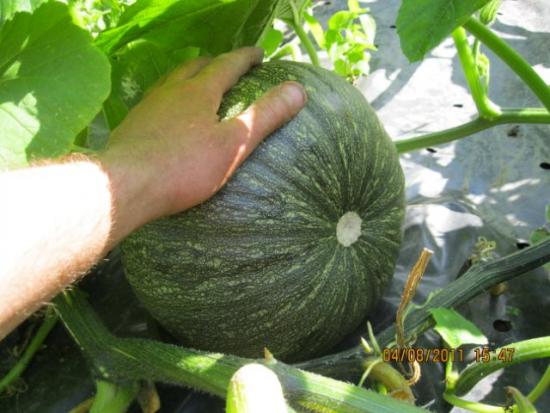
Before sowing seeds, you need to prepare sowing material and treat the area. A couple of days before planting, warm the seeds for 10 hours at a temperature of about 40 degrees, and then immerse them in an ash solution for 12 hours. To prepare an ash solution, you need to dilute 2 tablespoons of wood ash in a liter of boiling water.
Next, dig holes with a diameter of about 30 cm. The distance between the holes should be about 60 cm, since the pumpkin grows very much. It is recommended to make holes for seeds in a checkerboard pattern. In order for the seedlings to develop well, before planting, pour about 2 liters of water into the hole, the temperature of which is +50 degrees.
As soon as the soil begins to absorb water, you can plant the seeds, deepening them to 5-6 cm. Next, cover them with a nutrient mixture and mulch them with humus. This procedure will increase seed germination.In order for the seed material to begin to germinate quickly, the entire area is covered with film and the edges are tightly fixed.
Video about the marble pumpkin variety:
With the emergence of shoots, the film is not removed, but cut, a wire frame is installed and covered. In addition to planting in open ground, grow pumpkin can be grown by seedlings at home. In this case, the seedlings do not require picking.
Proper pumpkin care
Caring for vegetable crops after the emergence of seedlings consists of watering, thinning, weeding and fertilizing. If necessary, artificial pollination is carried out. This is done if the ovaries are not fully fertilized. The seedlings are watered every day after planting.
Watering is not carried out if the summer is rainy. After watering, it is necessary to loosen the soil and remove weeds. Between rows, loosening should be done before watering and to a depth of about 12 cm.
This way the water will penetrate to the roots faster. When the seedlings have 2-3 leaves, it is necessary to thin the seedlings, leaving one sprout at a time. Fertilizing is carried out three weeks after sowing the seeds with manure or chicken droppings in a ratio of 1:4. Organic fertilizers are recommended to be introduced 3-4 times a month. As feeding You can use wood ash: add a glass of ash to 10 liters of water.
Uses of pumpkin
Pumpkin contains a large amount of carotene. People with eye diseases are prescribed a pumpkin diet. This vegetable is useful for stomach and intestinal diseases. Pumpkin juice will help get rid of constipation, and the seeds will help get rid of parasites. In cooking, pumpkin is widely used to prepare various dishes. Pumpkin goes well with many vegetables in any form.This vegetable is added during the preparation of millet, rice and semolina porridge.
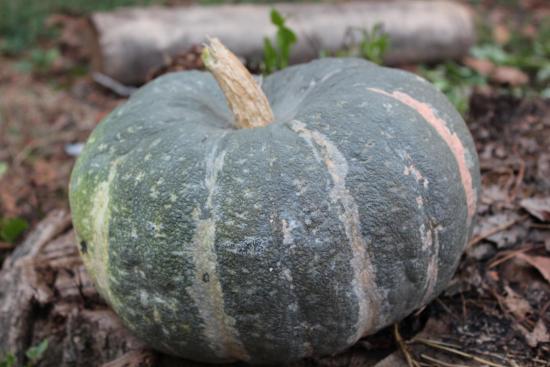
Pumpkin puree is administered as complementary food to children under one year of age. In addition, pumpkin can be added to soup, used as a filling for a pie or casserole. Not only the pulp can be eaten, but also seeds, plant flowers. The seeds will be an excellent addition to desserts or baked goods, and the flowers will be a great addition to salads.

